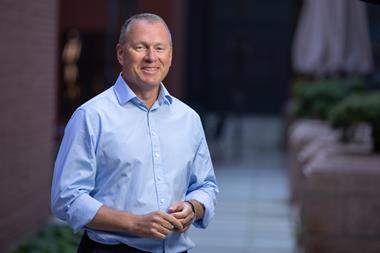Asia-Pacific central banks should invest some of their surplus reserves of US$2.345 trillion in assets with higher risk-adjusted returns such as equities, hedge funds, direct investments and bonds, according to State Street Global Advisors.
Hon Cheung, regional director of SSgA’s official institutions group in Singapore thinks central banks are more likely to follow their conservative instincts instead. He also thinks they are too slow to diversify their fast-growing foreign exchange reserves beyond the usual favourites of US government bonds, dollars, euros, pounds and yen.
“The traditional way of managing foreign exchange reserves goes back to a time when the world was a simpler place and reserves were mainly used for operational cash flows such as servicing import and export needs,” Cheung says. “The world has changed significantly since and, as a result, we think that Asia’s reserves are managed too conservatively.”
Cheung estimates that 11 of the region’s biggest central banks were together holding US$5.1 trillion of foreign exchange at the end of 2009. Of that, US$381.4 billion was for short-term needs to cover repatriation of capital inflows, and US$2.335 trillion was set aside for sterilisation of government bonds in the medium term. That left a pool of US$2.345 trillion available for longer-term investment.
Japan had the biggest surplus at US$996.6 billion, followed by China at US$614.9 billion and Taiwan, US$161.7 billion. An International Monetary Fund working paper estimated in June that 60% of central banks combined reserves were in US dollars between 2003 and 2009, and 30% were in euros. The report, by Jukka Philman and Han van der Hoorn, said exchange rate movements and accumulation of reserves had driven reallocation of currencies. Other types of diversification included switching to assets with higher expected returns, such as buying more nongovernment bonds and preferring longer duration instruments over those with very short maturities.
Hon Cheung thinks that central banks’ diversification efforts will remain within the boundaries of fixed income and perhaps gold. “Asia’s central banks might invest in emerging market debt and inflation-protected bonds but their participation will not be significant because it’s still a small market.”
Even sterilisation reserves don’t have to be invested into the traditional assets, “Sterilisation reserves backing up government bonds don’t mature immediately, so the central bank can invest into longer-duration assets, Cheung says. “Asian central banks might also consider bonds denominated in Asian currencies.”
During the October International Monetary Fund meetings in Washington, the governor of the People’s Bank of China, Zhou Xiaochuan, said China could further diversify foreign exchange reserves to include emerging market and smaller country currencies. Several central banks are beginning to head in that direction.
In August, China opened its domestic interbank bond market to central banks that have a currency swap agreement, including Malaysia, Singapore, Hong Kong, South Korea and Indonesia among others. The People’s Bank of China has bought Korean won-denominated bonds, and Malaysia’s central bank, Bank Negara Malaysia, recently reportedly purchased renminbi-denominated bonds.












No comments yet